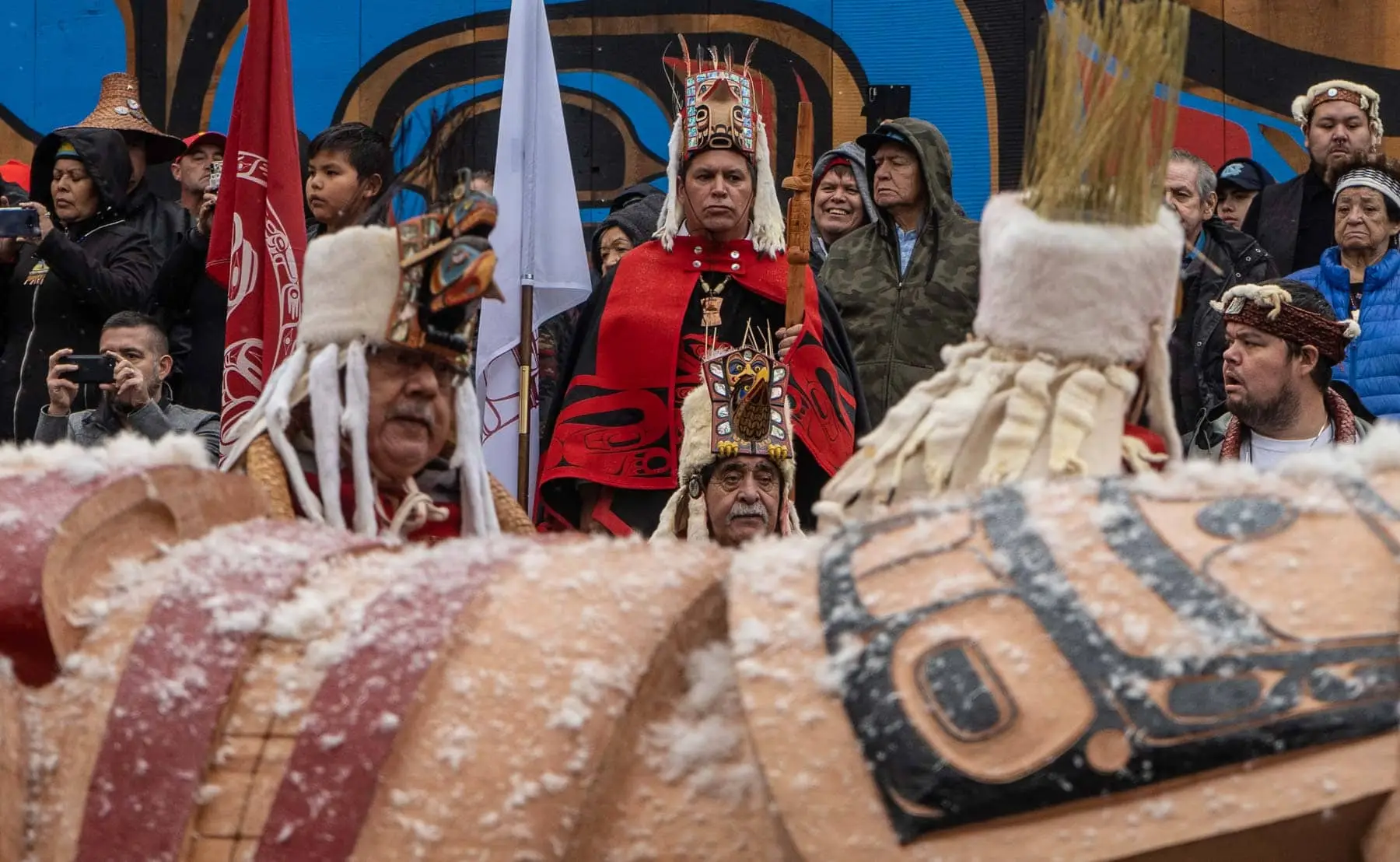Gvákva’áus Haíłzaqv (House of the Haíłzaqv) Big House opening
October 13-17, 2020
We can still feel the pulse of a thousand beats of a thousand hearts from the Gvákva’áus Haíłzaqv (House of the Haíłzaqv) Big House opening. We were incredibly honoured to be in Heiltsuk (Haíɫzaqv) territory to witness and celebrate this monumental event. Where coastal nations came to share, support, and work together towards a stronger future for generations to come. This opening welcomes a dedicated place for governance and conducting of Heiltsuk traditional legal system and ceremony.

The plans for having a cultural space to carry out business and pass on traditions to younger generations have been in place for over 40 years, but it wasn’t until the last decade or so that tangible plans started getting drawn up, trees were scouted for construction, and fundraising began. The excitement of the days leading up to the Big House opening was vibrant and contagious. Community members and visitors alike were milling about with tasks, big and small. The entire village of Waglisla (Bella Bella) came together to make this event one that will be passed on from generation to generation.
Five days of potlatching commenced on October 13th to celebrate this momentous occasion, bringing the first Big House home to Heiltsuk territory in over 120 years. Walking into the space was a transcendent experience. Oftentimes, determining what year, let alone what century it was, was only confirmed by the wardrobes worn from witnesses in the stands.

The heat of the crackling fire in the middle of the Big House made the blood rush through my body, speeding up my heart rate, seeming to match the beat of the room and all that it encompassed. Smells of salmon cooking for the dinner feast filled my nostrils, mixing with freshly cut cedar boughs, and the energizing smell of the monumental structural beams. All logs and wood used for construction were harvested and milled in Heiltsuk territory. I found I often had to close my eyes and take a deep breath, because it was almost hard to breathe, not for lack of oxygen, but the saturation of all of the senses, in the best possible way.
Eyes and ears were drawn in to witness these days from near and afar. At one point during ceremony, an announcement was made for everyone in the Big House to remain indoors as there was a very large black bear roaming around the perimeter outside. It is not a common sight for bears to come right into the village. This one, curiously drawn to the festivities, no doubt.

On day two, the Haida delegation shared the floor. This day tied one monumental event to another as the Haida and Heiltsuk reaffirmed an allyship to protect their neighbouring nations. The Peace Treaty between the Haida and Heiltsuk nations was officially signed in 2017, continuing on from centuries of conversations and negotiations.
Historically known as adversaries across the strait, the nations have joined forces to defend against threats of resource extraction industries that could ultimately cause harm to the entire coast. The raising of the Haíɫzaqv-Haida Peace Treaty Pole, carved by Haida artist Christian White (Kihlguulans) and his apprentices, and blessed by Haida and Heiltsuk elders and matriarchs, was the final commemorative piece to the treaty – but it marks just the beginning of this partnership between Nations.

To witness over a hundred Haida dancers, drum, and sing in their traditional language and feel their energy in this space was magnetic. The night came to a close around 1:00 AM, as Chief Gidansta (Guujaaw) took the mic for the final words of the evening. The crowd was preparing for an in-depth and complex breakdown of the nations’ converging pasts, however, were surprised when he concisely summarized: “Peace is more productive than conflict,” and walked back to his seat. The house erupted in uproarious applauds at the mic-drop-esque close to an unforgettable evening. “And that’s how we like it,” replied William Housty, Heiltsuk speaker for the evening and an integral part of the Big House project from start to finish.
Each day a new energy was exhaled into the Big House, while different nations inhaled the space itself through cultural sharing. Traditional ceremonies were danced and songs were sung from many different neighbouring nations, including Kwakwaka’wakw, Nuxalk, Namgis, Kitasoo/Xai’Xais, Wuikinuxv, and even as far as Māori tribes were represented. Each nation was given space to share their culture in celebration. Knowledge, wisdom, compassion, and most evident, respect, flowed through this space with welcomed energy.

We are thankful to have witnessed the uplifting and respectful nature of this week. We look forward to our return to these territories with a better understanding of the intricacies of each of these nations, their traditions and their challenges, and with greater respect for their unfettered resilience in the face of adversity. We are reminded of their leadership and solidarity to continue to steward these lands and waterways, as they have done for millennia.
Congratulations and Ǧiáxsix̌a (thank you) to the Haíłzaqv for welcoming us to their territory during this remarkable accomplishment for the Heiltsuk Nation.






